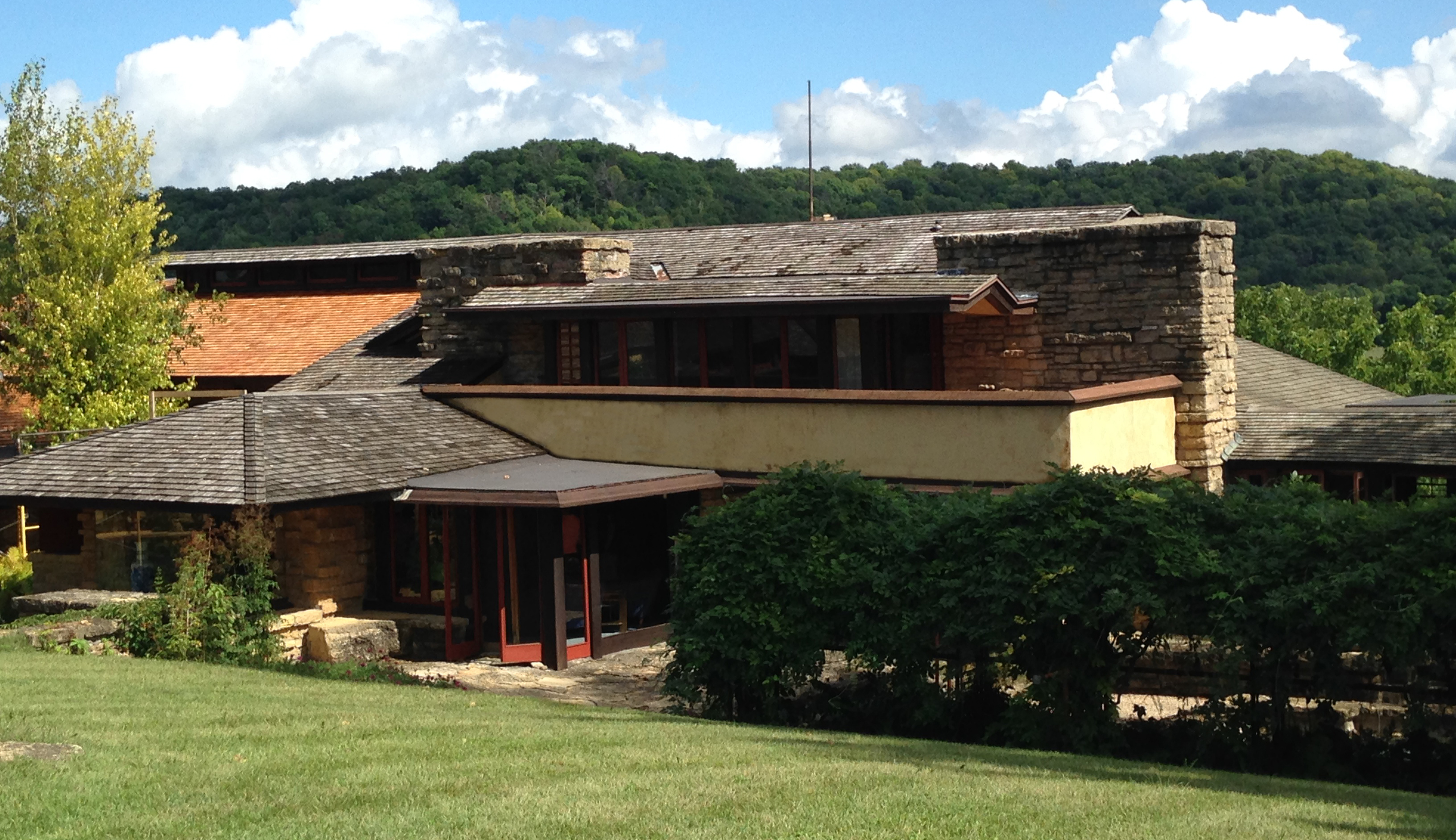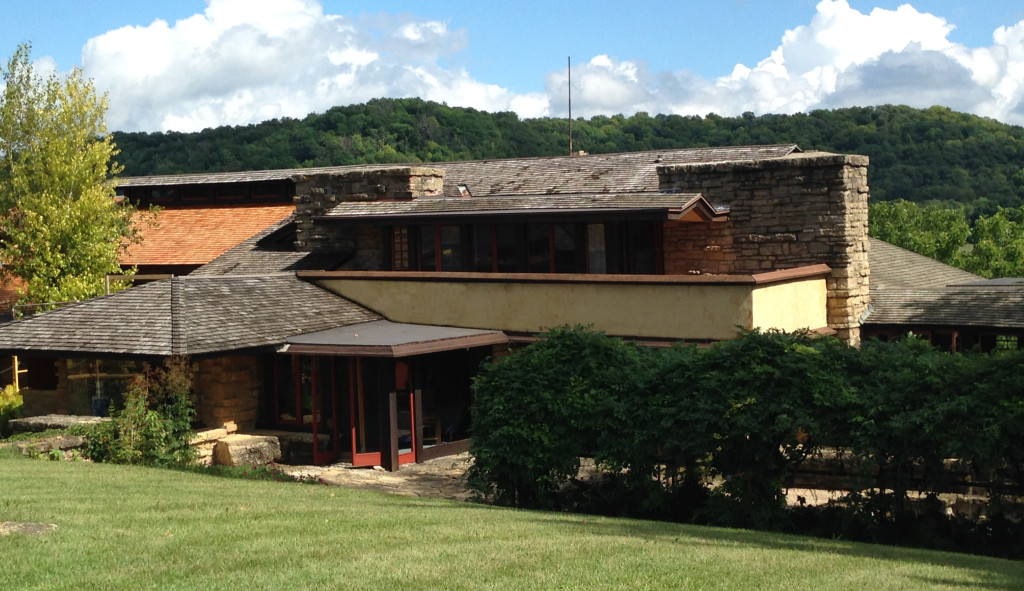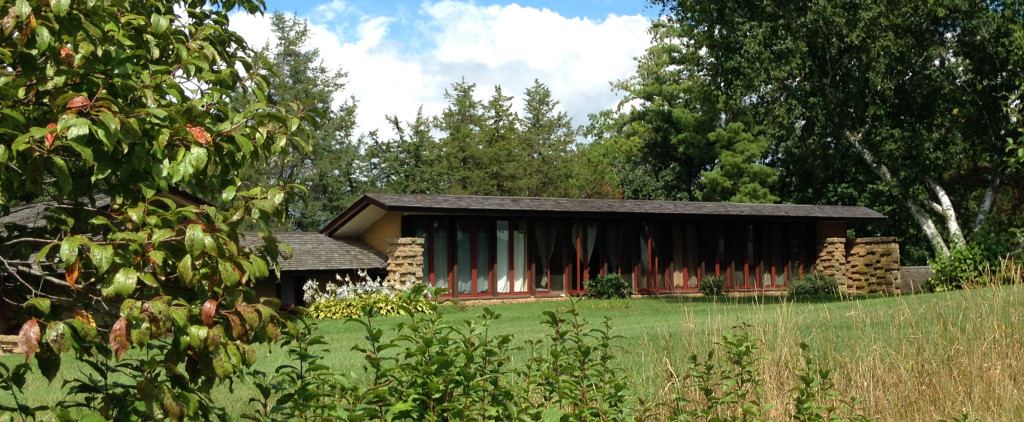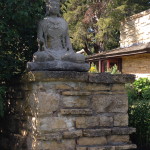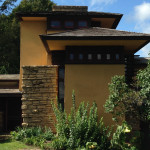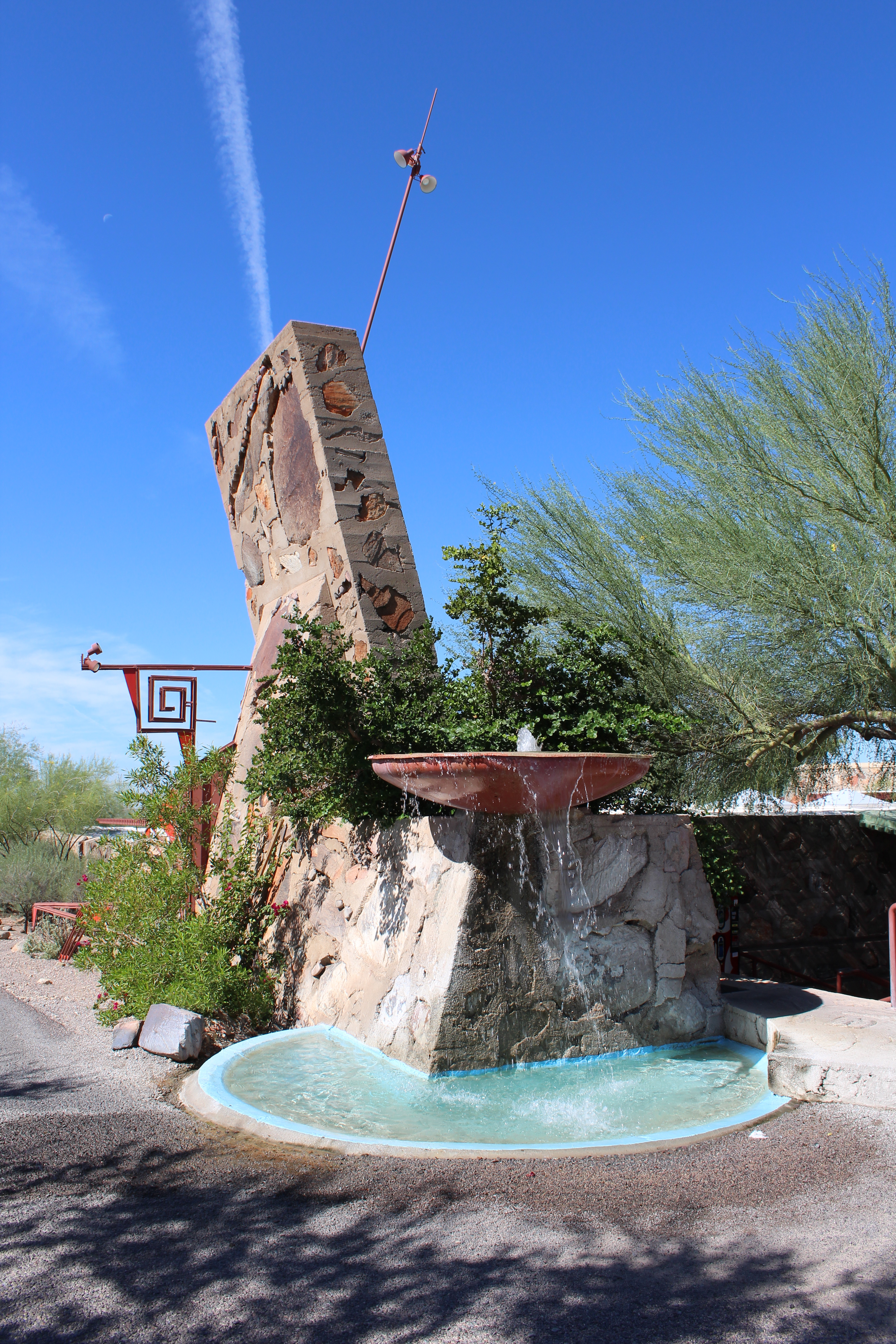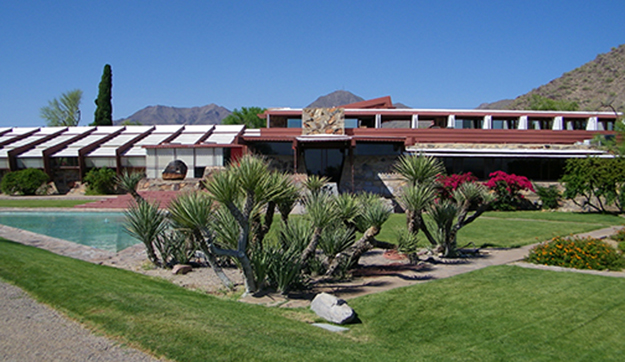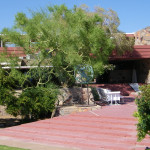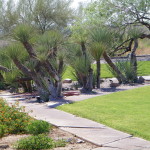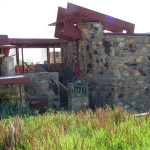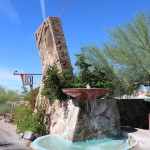Click on the first photo in each group and scroll to see the square photos at full size.
In 1932 the Taliesin Fellowship was founded as a community that provided architectural training with a “learn by doing” approach. The community survives today as the Frank Lloyd Wright School of Architecture whose members, both faculty and apprentices, are still known as the Taliesin Fellowship and reside at Taliesin during the summer months.
Frank Lloyd Wright finished his schooling at UW-Madison and started his architectural career in Chicago, but he returned to the Wisconsin valley that his Welsh ancestors had settled – where he had spent many summers in his teens. There, in 1911, he began building Taliesin, which would be his principal residence and new studio for the remainder of his life. Like Taliesin West, it was a work in progress, as he and the Fellowship reworked it and kept adding on.
It was truly a beautiful day when we visited Taliesin. There was a 70% chance that our tour would be rained out, but as you can see by the photos, not a drop. This was kinda where it all began for Frank Lloyd Wright. His home base. Again we had an excellent tour guide. She told us that the name Taliesin “shining brow” was chosen because the building wraps around the brow of the hill, but a Welsh poet named Taliesin may have also inspired the name, due to Wright’s love of his Welsh ancestry. We saw the interior and the gardens and truly enjoyed every minute of the two-hour tour. We may go back for the four-hour tour sometime in the future. I just can’t get enough!
Did you know:
- Of the 500+ buildings Wright designed through his life, one-third were built during the final decade of his life, including the Guggenheim Museum in New York, meaning he would have been in his 80’s.
- More than one-third of his buildings are listed on the National Register of Historic Places or are part of National Register Historic Districts.
- Twenty-four of his buildings are National Historic Landmarks, the highest honor bestowed on historic properties by the federal government.
- His Wisconsin home, Taliesin, became a National Historic Landmark in 1976. In 2008, Taliesin was one of 10 Frank Lloyd Wright-designed buildings that were submitted by the United States National Park Service as nominees for World Heritage Status.
For more of Frank Lloyd Wright, visit his category in the menu above or click here.
Happy trails,
Barb
